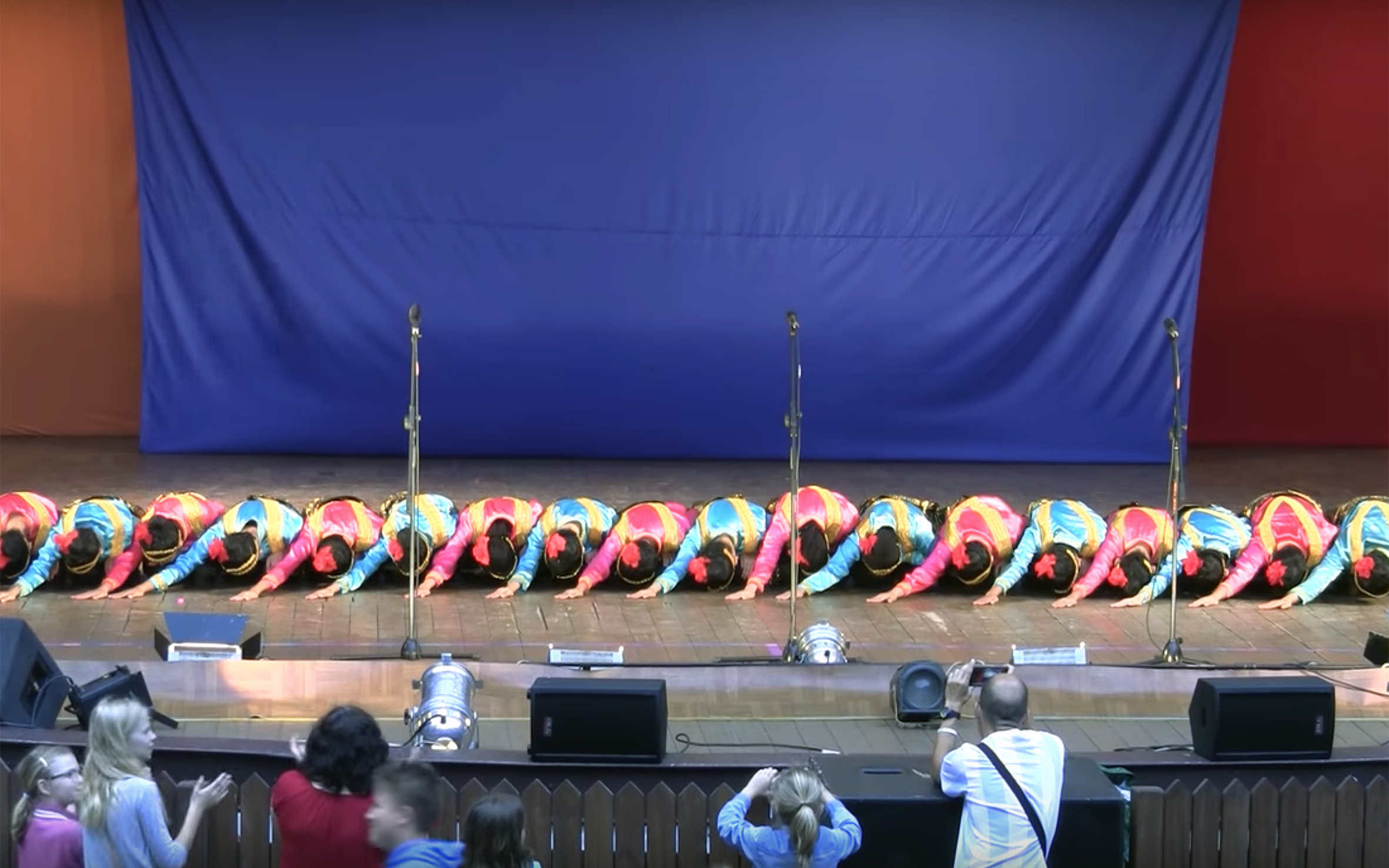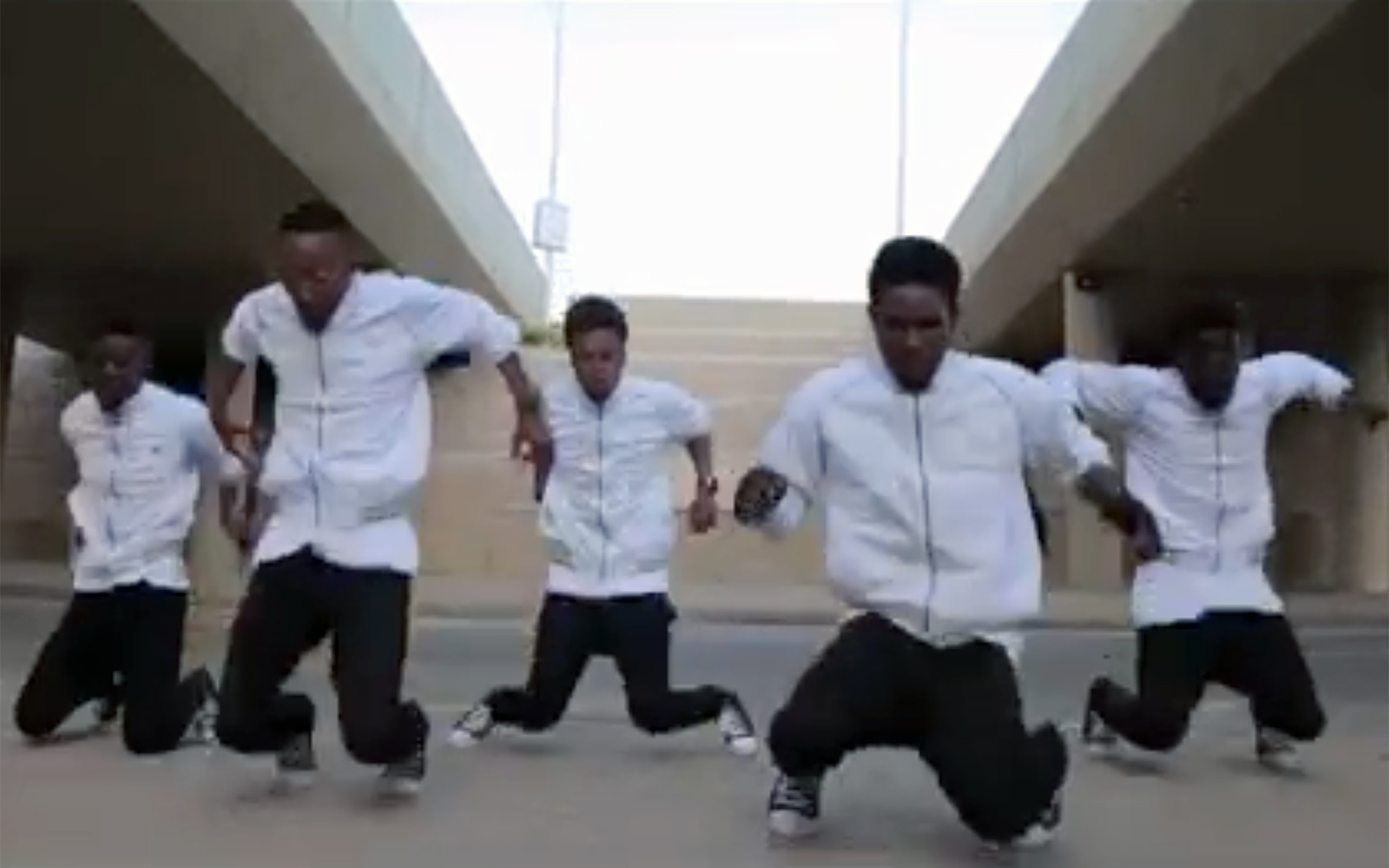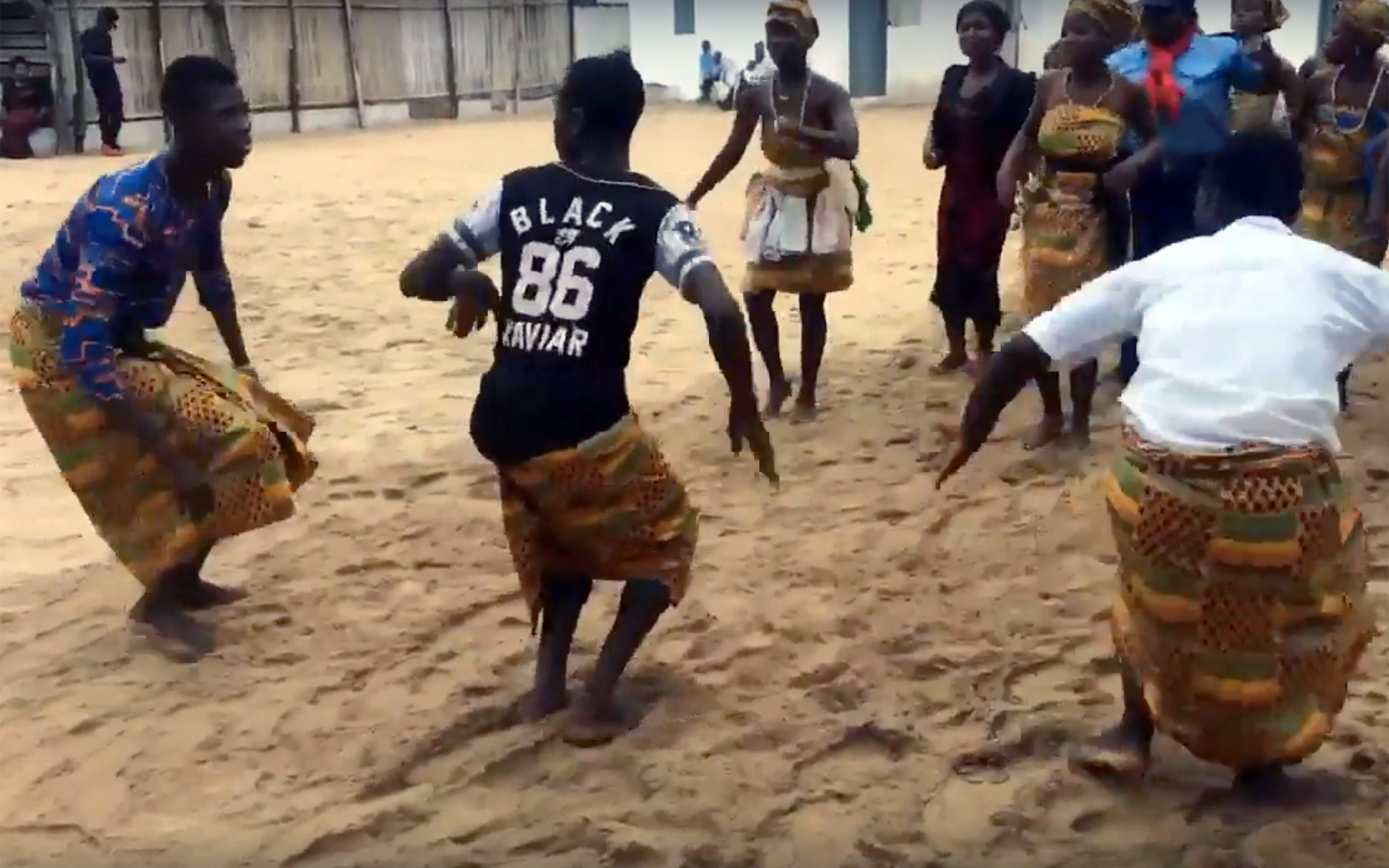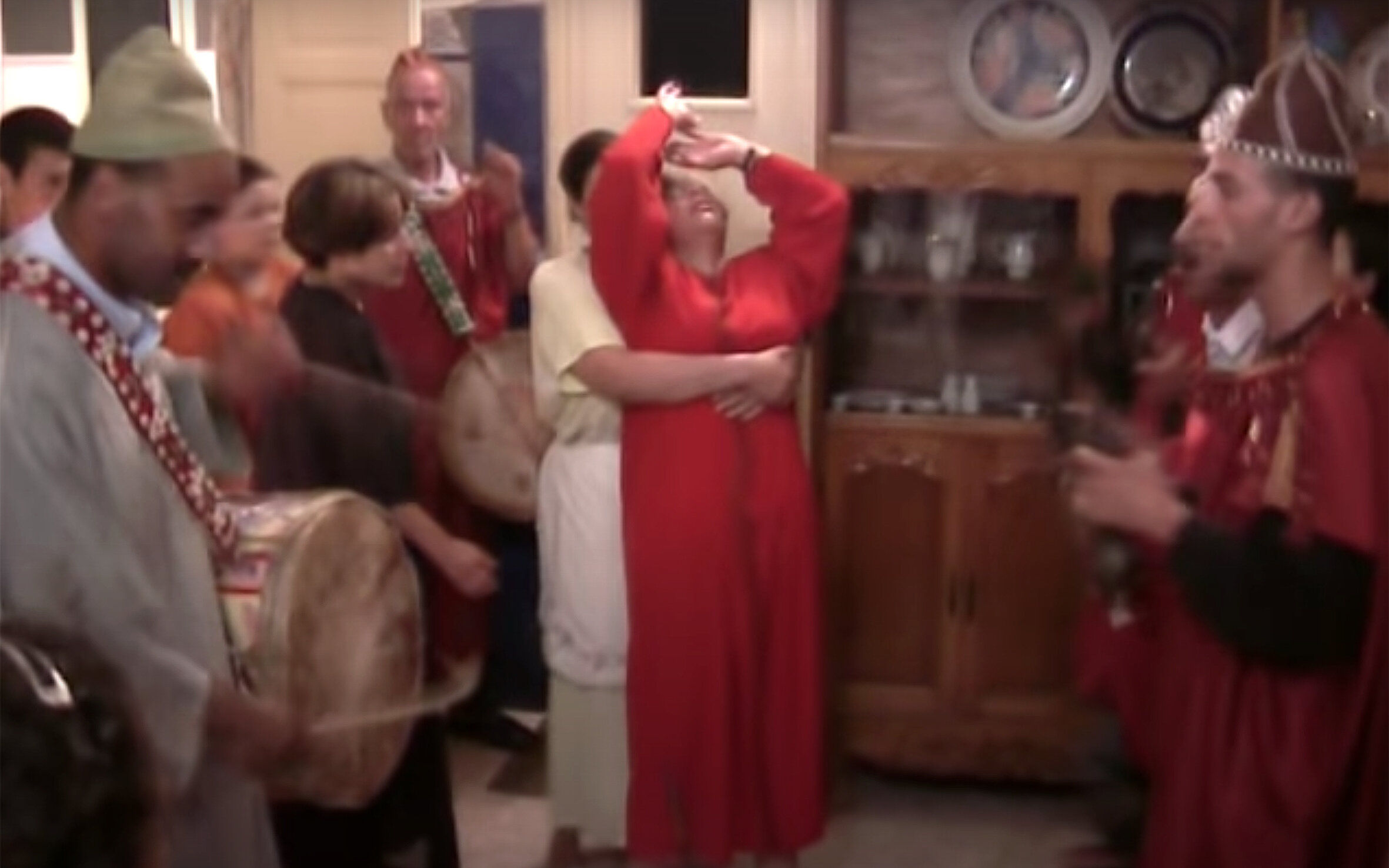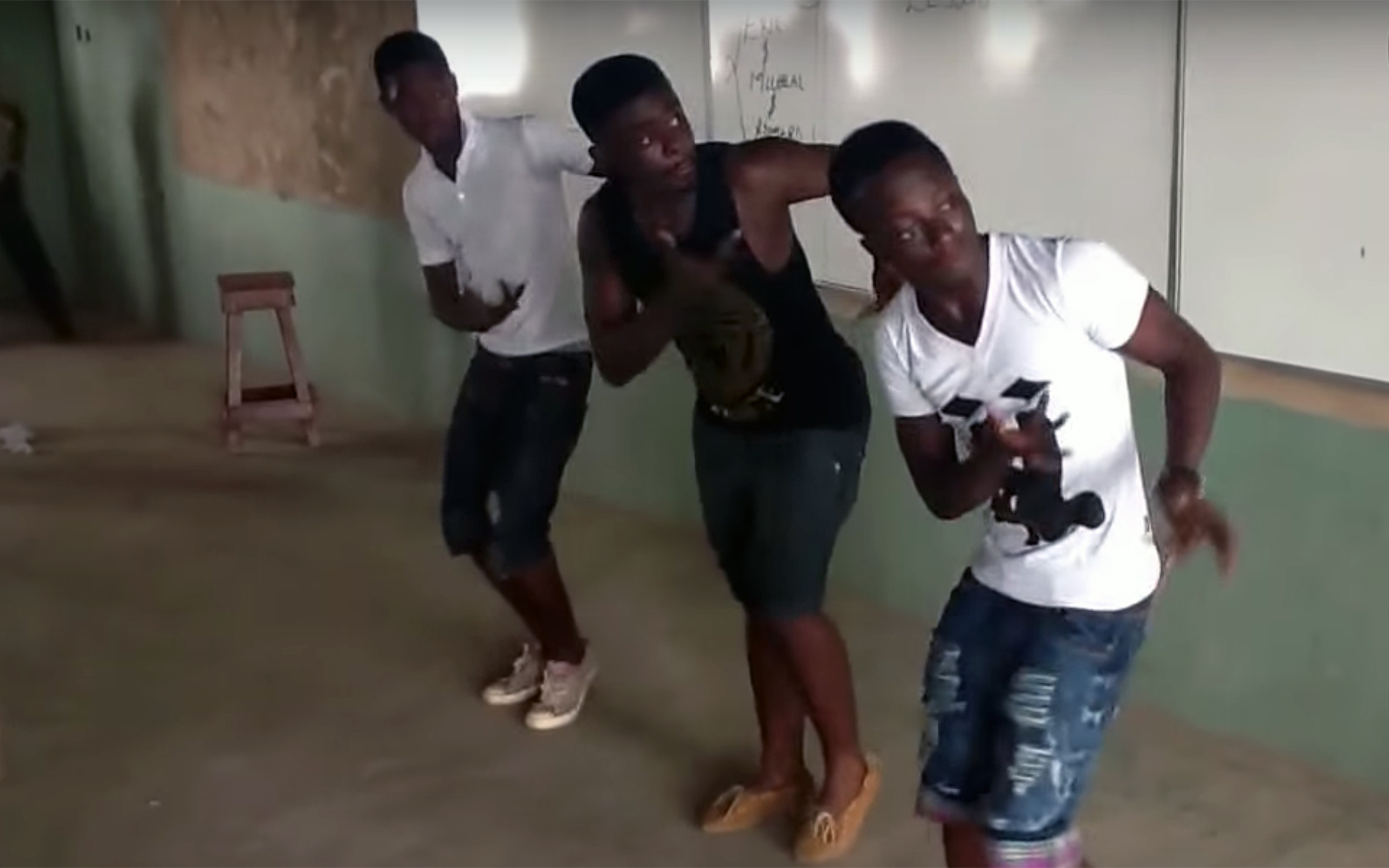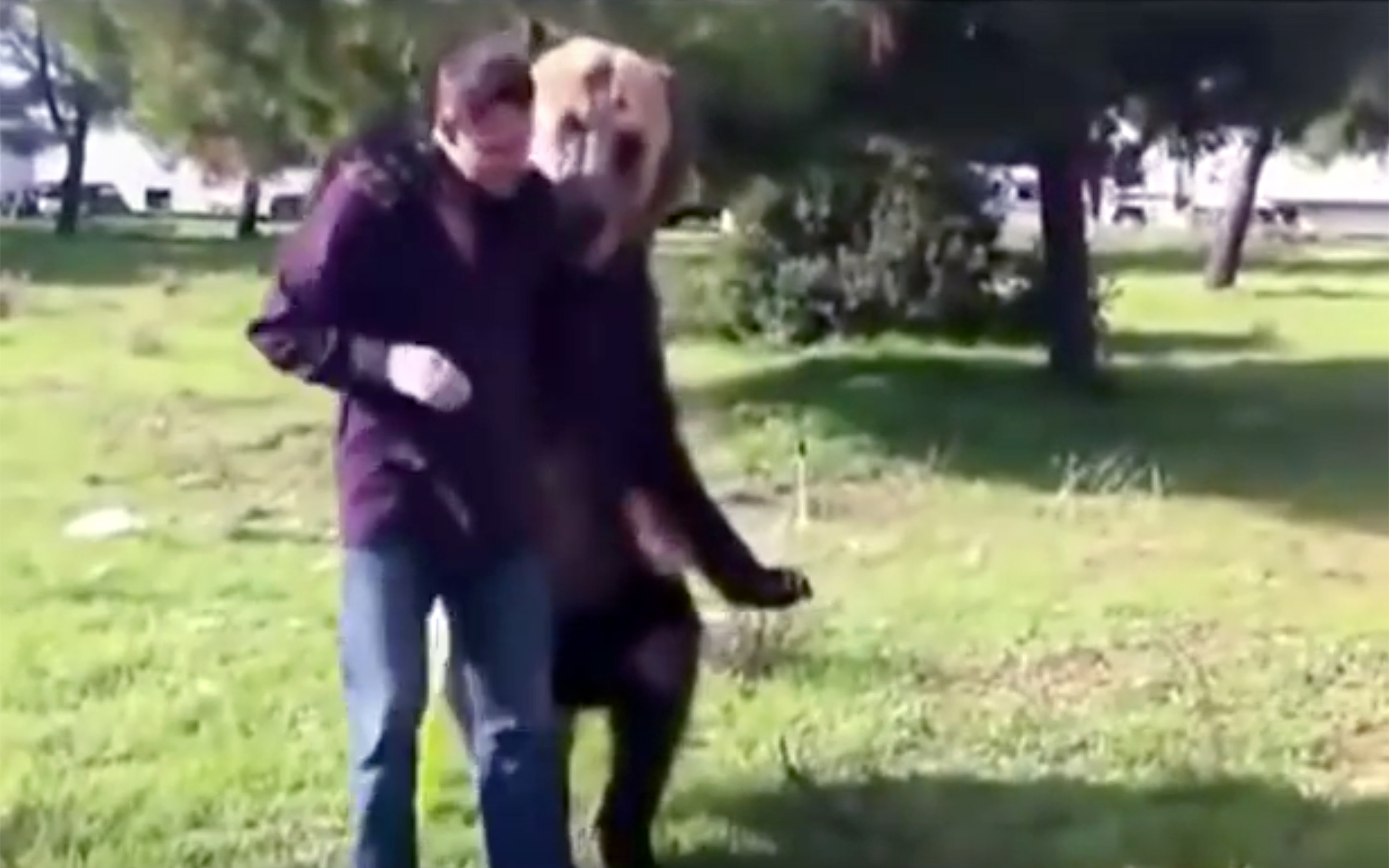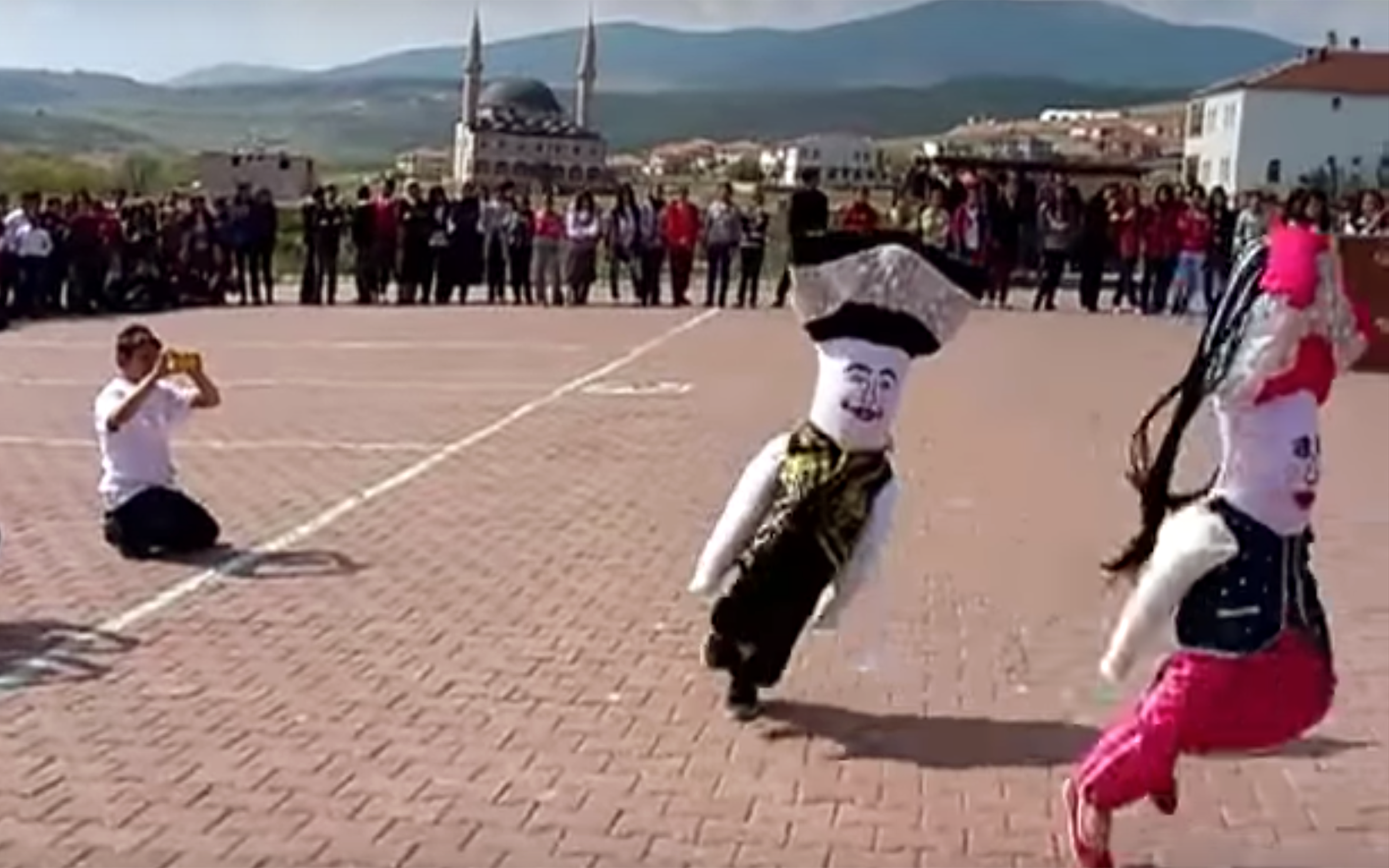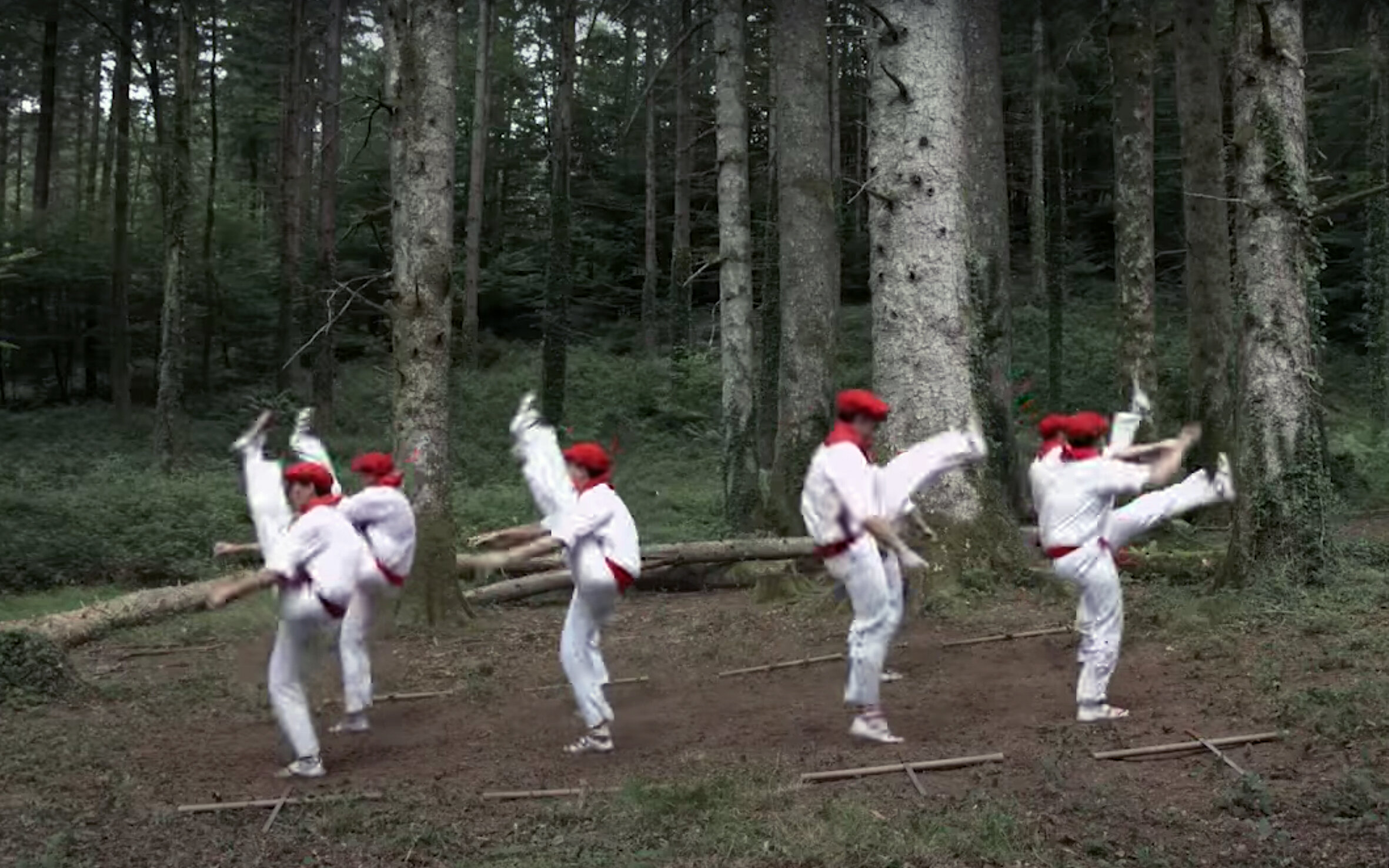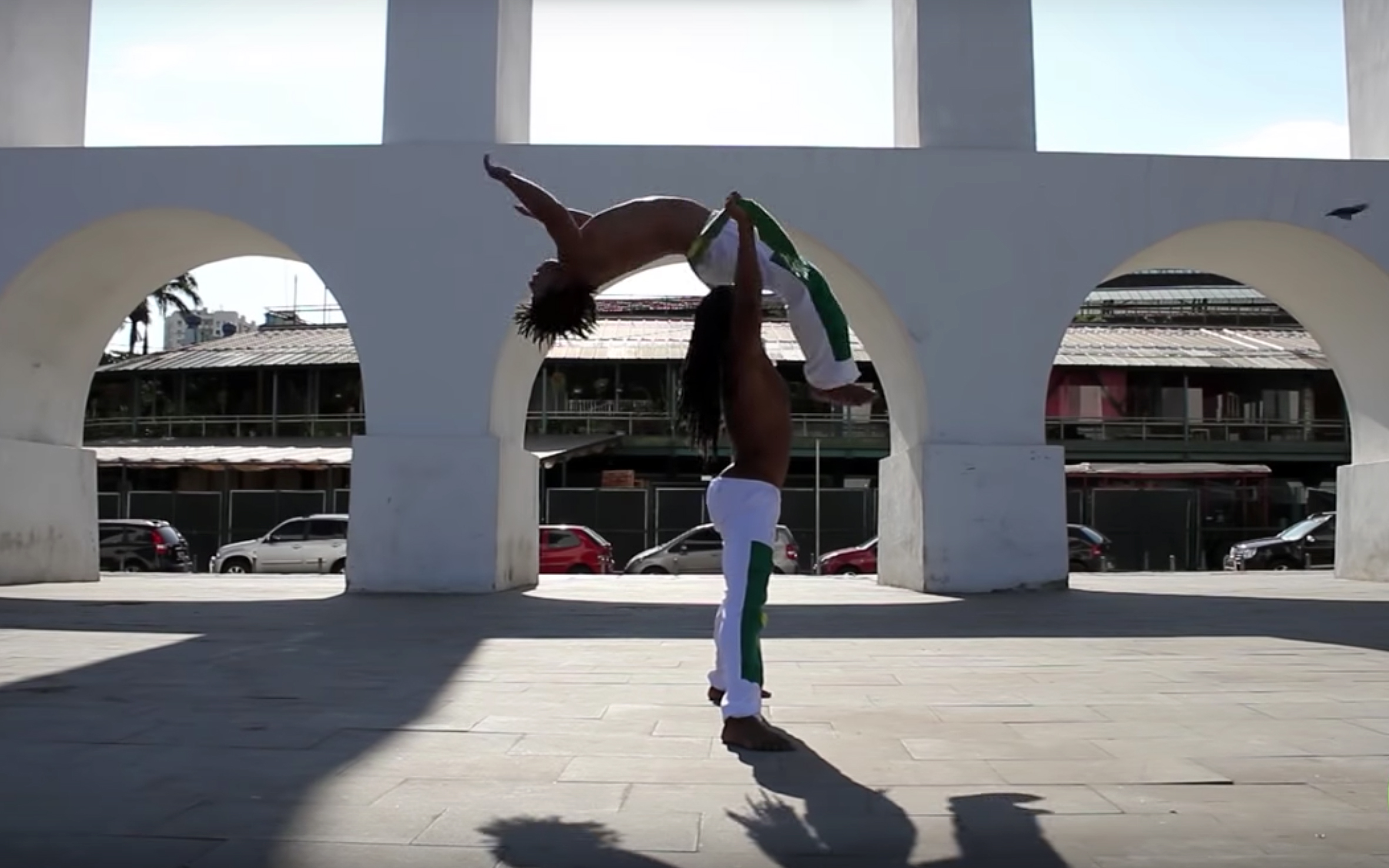Dance styles — Aa
1.ABAKUÁ DANCE / Cuba
ABAKUÁ DANCE is a dance performed by the Abakuá, an Afro-Cuban men’s initiatory fraternity or secret society originating from fraternal associations in the Cross River region of southeastern Nigeria and southwestern Cameroon. Members of this society were known as ñañigos, a word used to describe street dancers. Also called diablitos, they were well known all around Cuba because of their participation in the carnival on the Day of the Three Kings, when they danced on the streets in their ceremonial outfits—a multi colored checkerboard dance costumes with a conical headpiece topped with tassels.
2.ABORIGINAL TRADITIONAL DANCE / Australia / Papua New Guinea
ABORIGINAL TRADITIONAL DANCE is closely associated with singing songs and used to be experienced as making present the reality of the Dreamtime. Some groups held their dances secret or sacred. Dancing styles varied among hundreds of tribes and were performed with set arm, body, and foot movements with a lot of foot stamping. In some ceremonies, men and women would have separate dance traditions. Serious ritual or sacred dancing was quite distinct from lighthearted camp dancing that men, women, and children could share. While telling a story, dancers would imitate the actions of a particular animal. The best dancers and singers were highly respected. The term corroboree, coming from the people of the Sydney region, commonly refers to all Australian Aboriginal dances. Nowadays, they are also performed for tourists.
3.ABUKO / Ghana
ABUKO is a traditional Ashanti dance rhythm from Ghana. It is performed during traditional healing ceremonies to help excite and energize okomfo, traditional priest, in preparation for the possession by gods.
4.Aceh Ratoh Duek / Indonesia
ACEH RATOH DUEK is a famous dance from Indonesia, traditionally performed by women kneeling in a line. They all clap and move their hands in unison as a symbol of the harmony of the people of the Aceh province.
5.Acharuli / Georgia
ACHARULI got its name from the region of Achara in Georgia. Its colourful costumes and playful mood distinguish it from other Georgian dances. It is especially characterised by graceful, soft, and playful flirtation between the male and female dancers. Unlike in Kartuli, the relationship between men and women in this dance is more informal and lighthearted. Acharuli instills the sense of happiness in both the dancers and the audience.
6.Acholi DANCES / Uganda / South Sudan
ACHOLI DANCES are traditional dances by the Acholi people from Northern Uganda, such as Larakaraka dance or Bwola dance. Larakaraka is a courtship dance performed during weddings. When the youth in a particular village are ready for marriage, a big ceremony is organized where all potential partners meet. Only the best dancers will get partners, so there is a lot of competition during the dancing. Bwola is one of the most prestigious dances—a royal dance performed for the Acholi king. The men form a large circle and each carries a drum. The movement of their feet matches rhythmically with the beating of the drums. The women dance separately inside the circle without beating drums. The dance has a leader who moves by himself within the circle, setting the time and leading the singing.
7.ACROBATIC ROCK / France
ACROBATIC ROCK is a dance based on rock ’n’ roll dance which was brought by the Americans after the Second World War. Further, it added more dynamic movements. In France, Acrobatic Rock first appeared in Lyon in 1960.
8.ADOWA / Ghana
ADOWA is the most widespread and frequently performed social dance of the Akan people of Ghana. The Akan are located in Ashanti, Brong Ahafo, Eastern, Central and parts of the Volta Regions of Ghana. In the Akan musical traditions, it is best described as a women’s dance because they dominate the performance. The few men that are seen during any performance handle the musical instruments. The dancers use a symbolic language, the different movements of their hands telling their story. The body language is accentuated by the use of a white linen cloth, which they hold in their hand. The short dance steps are very subtle, drawing attention to the upper part of the body. Adowa is mostly performed at funerals but it can also be seen at yearly festivals, visits of important dignitaries and other celebrations.
9.AEROBIC / Global
AEROBIC is a form of physical exercise that combines rhythmic aerobic exercise with stretching and strength training routines with the goal of improving all elements of fitness (flexibility, muscular strength, and cardio-vascular fitness). It can be seen as a dance because aerobic practitioners perform various routines, comprising a number of different dance-like exercises, usually to music and mostly in a group setting with an instructor. Although, it can also be done solo and without musical accompaniment.
10.Afar Dances / Ethiopia
AFAR DANCES are performed by the Afar people, an ethnic group inhabiting the Horn of Africa, primarily the Afar Region of Ethiopia and northern Djibouti, although some inhabit also the southern point of Eritrea. Dance plays an important role in the Afar culture and is always present at important celebrations. There are two typical dances: Laale and Keeke. Laale is performed exclusively by men, and Keeke is danced by men and women, for example at marriage ceremonies. The dances are characterized by feet stomps and jumping accompanied by hands clapping.
11.AFRICAN DANCE / Africa / Global
AFRICAN DANCE refers mainly to the dances of Sub-Saharan Africa, with a close connection to the Sub-Saharan African music traditions and Bantu cultivation of rhythm, with many cultural differences in musical and movement styles. African dances utilise the concept of total body articulation. They teach social patterns and values, and help people to work, mature, praise or criticize members of the community while celebrating festivals and funerals, competing, reciting history, proverbs, and poetry, or encountering gods. African dances are largely participatory, with spectators being part of the performance. With the exception of some spiritual, religious or initiation dances, there are traditionally no barriers between dancers and onlookers. Even ritual dances often require spectators’ participation.
12.AFRO DANCE / Global
AFRO DANCE is a mixture of Sub-Saharan African dance moves with contemporary pop, rap and trap movements. It is strongly present in the European countries with many African immigrants, especially France and other French-speaking places, the Netherlands, as well as the UK.
13.Afrohouse / Africa
AFRO HOUSE is an energetic dance style that originated in Africa. It derives from Kuduro, an Angolan dance style that evolved during a period of war. Besides elements of Kuduro, Afro House has a softer, more cheerful side, inspired by—among other styles— Pantsula, a dance style developed in South Africa and discovered by Angolan youth on their travels. They were the ones who developed the mixed dance style into the form we now know as Afro House.
14.Agbadza / Ghana / Togo / Benin
AGBADZA is a music and dance that evolved, from the times of war, into a very popular recreational dance. It is originally done by the Ewe people of the Volta Region of Ghana, particularly during the Hogbetsotso Festival, a celebration by the Anlo Ewe people. It is also danced in Togo and Benin. The dance is usually played at funerals, weddings, and parties. Essentially, it is played on any occasion that calls for the Ewe identity emblem, since by other ethnic groups this music is known to be uniquely Ewe. Everyone is welcome to join in the dance. Sometimes it is known as the “chicken dance” because of the bird-like dance moves.
15.Ahidous / Morocco
AHIDOUS is a traditional Amazigh dance from the Middle and High Atlas performed by many Berber tribes. The performance includes songs, dances and impromptu poetry performed by a group of performers standing shoulder to shoulder along with other men and women. They all form either a large circle or two facing lines and dance making small smooth movements. Ahidous is one of the most common Amazigh dances and is present at any celebration, from weddings to religious Eid, or the end of the harvest season.
16.Ahwach / Morocco
AHWACH is a style of collective performance, including dance, singing, poetry and percussion, from southern Morocco. It is performed as a community celebration, usually by two large groups of people, typically men and women on opposite sides, who alternate their performances of song, dance, poetry, and drumming on frame drums. It is rarely performed outside of individual villages, because of the difficulty of transporting the large number of participants (often more than twenty, and sometimes 150 or more). As a result, the Ahwash has developed somewhat independently among different villages, and the details of the performances differ—the ritual performance tends to reenact the tales and stories of each village. The experience can be spiritual with connection to pre-Islamic beliefs and rituals.
17.AIR DANCING / Global
AIR DANCING is a dance performed in the sky by a tube man, also known as an air dancer. Originally called the Tall Boy, it is an inflatable moving advertising product comprising a long fabric tube (with two or more outlets), which is attached to and powered by an electrical fan. As the electrical fan blows air through the fabric tube, this causes the tube to move about in a dynamic dancing or flailing motion.
18.AISSAWA / Morocco
AISSAWA is a type of mystical and religious brotherhood in Morocco, where music and dance are organized in ritual nights, with participants being often brought to ecstatic trances. Aissawa emanated from Sufism in the region of Meknes. Dances differ from each other in a variety of rhythms.
19.Aji Lhamu / Tibet / India
AJI LHAMU is one of the most prominent folk dance styles by the Monpa tribe of Tawang in Arunachal Pradesh, India. It is basically the Tibetan version of the Hindu epic Ramayana. There are mainly five characters in this dance drama. Nyapa is the central character and Nyao is the rival character, Lhamu and Lhum are two female characters and Gyeli is another character. They all have mythological origins. Lhamu is a fairy from heaven, who came to Earth and later became the queen of Gyeli. This dance style also portrays the grand ceremony of the wedding of King Chhoegay Norzang and Lhamu. It is performed during the Losar festival.
20.Akayida / Ghana
AKAYIDA is a Ghanaian dance with an emphasis on the side to side moves, incorporating upper body gestures, and encouraging group routines as well as individual competition. It is extremely
relaxed, free-form. It involves footwork, incorporates vast arrays of hip-life dance moves, and involves the swaying of the body along with hand and shoulder movements in a certain pattern. Ghanaian hip hop artist Guru, whose song “Boys Abrɛ” provides a soundtrack for the Akayida, has stated clearly that the dance has nothing to do with Al Qaeda and the Taliban. He has explained that it is the name for a new dance move that emerged on the streets of Accra but wasn’t getting attention. The dance gained popularity only because of the popularity of the song which speaks of the hardships of relationships, wealth, and life in general.
21.AKU SHIKA / Ghana / Viral
AKU SHIKA is an afro urban dance inspired by the song of Kuami Eugene, Ghanaian afrobeat singer-songwriter. The dance video to this song became a hit and soon it went viral with people all around West Africa going crazy about this new dance.
22.AKWAABA / Ghana / Viral
AKWAABA means “welcome” in Ghana. It is undoubtedly the biggest Ghanaian dance anthem of 2018, after a Ghanaian DJ and record producer GuiltyBeatz dropped his debut single featuring Mr Eazi and rappers Pappy Kojo and Patapaa. The song and its accompanying dance went viral shortly after its release, and it has been seen on dance floors all over the world.
23.ALLAOUI / Algeria / Morocco
ALLAOUI is a traditional warrior music and dance from western Algeria and eastern Morocco. It is of Berber origin and developed several variants. It is performed by several male dancers guided by a leader, who celebrate victory and pride with feet and shoulders movements to the rhythm of percussion. The dancers express their attachment to the land and their endurance capacity.
24.AL-AYYALA / Oman / United Arab Emirates
AL-AYYALA is a dance performed in north-western Oman but also practiced in the United Arab Emirates. Two rows of men facing each other with thin bamboo sticks in their hands simulate a battle. The dance involves chanted poetry and drums, cymbals, and tambourines. It is a traditional group dance accompanied by traditional music. Separate groups of males and females are represented. Leather bagpipes, flute, and drums are the traditional musical instruments played during the dance.
25.ALCATRAZ / Peru
ALCATRAZ comes from a folkloric celebration. It is danced in the regions of Lima and Ica as a festive erotic dance of loose couples. A man with a lit candle tries to light the “Cucuruchu” while a woman tries to turn it off with her sensual hip movements.
26.Aleke / Suriname
ALEKE is a dance originating in Suriname performed to aleke songs. These songs are about love, as well as about events and social problems in the community. In one of the latest aleke hits, young people are warned about the danger of AIDS. Aleke is performed by a cantor and a choir, with three drums about one meter high, a djas, a large drum that resembles a pauk, and lids, the bengele-bengele, named after the sound they produce. It is strengthened electronically, with a striking vocal. The dance is mostly freestyle.
27.AL-SAMAH / Syria
AL-SAMAH is a Syrian traditional Sufi ecstatic dance that was born out of Dhikr and prayer gatherings at the home of the Sheikh Aqeel al-Minbaji. Generally, the dance begins with authorization from a religious figure, usually a sheikh, and is composed of rhythmic, repetitive movements of the hands and feet, as well as rotations of the body, similar to that of the whirling dervishes. The male dancers twirl with their outfits throughout the song.
28.Alunelu / Romania
ALUNELU is a family of dances from Oltenia in Romania. In the early 20th century the song Alunelu became a staple of the Romanian school system, the position it holds to this day. It is not known whether at that time a particular dance was associated with the song. Today there seems to be no fixed dance tied to the relatively fixed song. Choreographies seem to be linked more to the age of the children and the demands of the stage.
29.Amarilletje / The Netherlands
AMARILLETJE is a typical Dutch folk dance.
30.Amish Dance / USA
AMISH DANCE is a dance performed within the Amish community in the USA. In fact, dancing is not really seen among Amish adults, but Rumspringa-age youth may dance. Amish do not consider dancing modest, because moving the body to the music is seen as a worldly activity, even so, many people know the famous square dance scene in which Amish happily shake a leg. Among Amish, music is limited to church hymns, as well as to religious hymns sung at home. The Amish community dances solely to the accompaniment of a harmonica or simply to the unaccompanied singing of the young people or to a caller.
31.ANIMAL DANCE / Global
ANIMAL DANCE is a dance performed by animals or by humans with animals. It is also a dance style that involves dancers imitating animal moves, often performed in a mask. Hundreds of videos of animal dancing (dogs, cats, horses, pigeons, squirrels, dolphins, fish, parrots, etc.) can be found on the Internet. Animals stomp, bob, waggle, nod, jerk, move rhythmically and with grace, which looks like dancing.
32.Animation Dance / Global
ANIMATION DANCE is a style and a technique where one imitates film characters being animated by stop motion. The technique of moving rigidly and jerky by tensing muscles and using techniques similar to strobing and the robot makes it appear as if the dancer has been animated frame by frame. Walt Disney was the first to use this term, referring to his character Steam Boat Willie’s motions as “the animation dance” in 1929. This style was heavily inspired by the films created by Ray Harryhausen, such as “The Seventh Voyage of Sinbad” (1958).
33.ANTIKRISTOS / Greece / Armenia / Cyprus
ANTIKRISTOS is a dance of Greek origin. In the Greek language, it refers to the verb “to be across, opposite, face-to face”. It is also known in Armenia and it has similarities with karsilamas dance. It is danced in couples.
34.A’PASTURARA / Italy
A’PASTURARA, also called LA PECORARA, is a traditional dance from Calabria, Italy. It is performed by one or two couples in 6/8 time to bagpipe and accordion accompaniment. Steps are usually close to the ground with occasional small leaps. The man keeps all his attention on the woman who holds her dress in her right hand with her left hand bent sharply at her hip.
35. AQUABATIC / Global
AQUABATIC is a type of dance related to gymnastic feats performed in water. Pole dancers show off their aquabatic skills as they run their dance routines underwater.
36.Ardah / Qatar
ARDAH is a type of folkloric group dance, performed with two rows of men opposite one another, each of whom may or may not be wielding a sword or cane, and is accompanied by drums and spoken poetry. It used to be a dance performed before going to war, but nowadays it is done at celebrations, weddings, and national and cultural events. There are a lot of variations of the Ardah dance in Arabic countries.
37.ARMENIAN DANCE / Armenia
ARMENIAN DANCE is considered one of the oldest and most varied in its respective region. There are rock paintings of scenes of country dancing from the fifth to the third millennia BC, found in the higher regions of Armenia, the land of Ararat. These dances were probably accompanied by certain kinds of songs or musical instruments. Old descendants of Armenia mention epic tales that were translated into their songs and dances. Traditional dancing is still quite popular among expatriate Armenians and has also been very successfully exported to international folk dance groups all over the world. Costumes vary depending on religious traditions, family, or other practicalities. The traditional coloring and exquisite beading of the costumes are quite common.
38. ASHATSHYRTRA / Abkhazia
ASHATSHYRTRA is a beautiful dance from Abkhazia, performed on the toes. It is of a military nature, reflecting the impact of the victory in the battle, performed by large groups of men each holding a weapon, mainly moving in a circle. It is some sort of theatrical performance that is a reflection of historical events and fighting of Abkhazian soldiers.
39.ASSIKO / Cameroon
ASSIKO is a popular dance from the south of Cameroon. Originally based in the Bassa country, this rhythmic dance takes its name from two words: “isi” changed into “assi” which means “earth” or “ground”, and the word “koo” which means “foot”. Assiko is danced dressed in a simple T-shirt and a full skirt with an underlined waistline to emphasize hip movements. Choreographies of Assiko use several lop-sided walks, successive small close walks that the dancers make at different heights, standing up or crouching, which makes you feel they float on the stage. There are also demonstrations of a sense of balance, contortions, and physical strength calling to the exhilaration of dance or trance.
40.ASSYRIAN FOLK DANCES / Syria / Iran / Iraq / Turkey
ASSYRIAN FOLK DANCES are dances that are performed throughout the world by Assyrians, mostly on occasions such as weddings, community parties, and other jubilant events. They are mainly made up of circle dances that are performed in a line, which may be straight, curved, or both. Most of the dances allow an unlimited number of participants, with the exception of the Sabre dance, which requires three at most. Assyrian dances would vary from simple to more complex, depending on the mood and tempo of a song.
41.AŞUK AND MAŞUK / Turkey
AŞUK AND MAŞUK is a dance of the Taseli district of Silifke in Turkey and is performed by two male dancers. It tells a story of a couple who loves each other but has obstacles preventing them from getting together.
42.Asyik / Malaysia
ASYIK (literally “beloved”/”besotted”) is a classical royal court dance popular in Patani and Kelantan. The dance was created in 1644 to entertain the grieving Ratu Kuning over the loss of her favorite bird. The dance’s name “the beloved” could have been referring to the lost bird. The performance begins with ten beautifully costumed dancers entering the dancing hall and sitting gracefully. The prima donna, also known as “the princess of love” appears then and the dance begins with gracious and delicate body movements and gestures. The orchestra consists of eleven types of small drums, gambangs (a xylophone like instrument, usually made of slabs of wood or bronze), and a rebab (a bowed lute). Although the dance began as a court dance, over time, it became popular among common people and used as folk entertainment during festivals and marriages.
43.ATSIAGBEKOR / Ghana / Togo / Benin
ATSIAGBEKOR is among the oldest traditional dances of the Ewe-speaking people of Southern Ghana, Togo, and Benin. Originally, a war dance performed after the battle when the warriors returned to the village—now performed on many social occasions. One of its outstanding features is the interaction between the master drummer and the dancers. Atsiagbekor songs constitute an important heritage of the Ewe oral tradition. Most of them contain historical references to their chiefs, war leaders, migration stories, as well as the themes relating to the invincibility of the Ewes against their enemies, of their loyalty, bravery, and death. The performance presents scenes of the actual origins of the battles fought as the Ewes trekked through hostile countries in search of peace. And it speaks about the qualities of womanhood, manhood, and human dignity.
44.Attan / Afghanistan
ATTAN is a dance that originated in Afghanistan. It began as a folk dance performed by Pashtuns in times of war or during weddings or other celebrations. Now it is considered the national dance of Afghanistan. It is performed typically by the Pashtun in open air by a troupe of 50 to 100 dancers who wave red scarves in the air while musicians beat the drums. To the accompaniment of drums and pipes, the dancers form a circle, taking each other by the hand or preparing to revolve in circles of their own. The dance starts with slow steps that gradually get faster and faster until it seems the performers must drop from exhaustion. However, the dance continues, sometimes for two or three hours with no breaks except for lowering the tempo or changes in the tunes and songs.
45.Aurresku / Spain
AURRESKU is a Basque folk dance of courtship, in which the men perform spirited acrobatic displays for their partners; it is one of the most elaborate European folk dances of this type. It begins as a chain dance for men, in which the leader and last man break off, dance competitively,
and rejoin the chain. Each later dances before his partner, and finally all bring their partners into the line, which eventually breaks into a fandango for couples.
46.AUSDRUCKSTANZ / Germany
AUSDRUCKSTANZ is a German dance called EXPRESSIONIST DANCE. It stems from the movement that arose in 1900 as a protest against the artistic stagnation of classical ballet and towards maturity in the future of art in general. The traditional ballet was perceived as austere, mechanical, and tightly held in fixed and conventional forms. This new dance was freer, natural, and less rule-governed. It was strongly influenced by the passage of the expressionist visual arts. Expressionist dance flourished until World War II when it disappeared almost completely in Central Europe. Typically, many solo expressionist dance evenings were held. They were influenced by the individual’s desire to create and present their own choreographic works, with the choreographer and dancer often being the same person.
47.AWASSA / Suriname / French Guiana
AWASSA is a dance of the Bushinengues community from Suriname and was performed to close the periods of grieving. Traditionally the dancers tell a story with their gestures or embellish the story that is being sung. The dance is accompanied by traditional drums, kwa kwa (bangi, small bench) and various apinti drums. The dancers have a strand of kawai (dried, hardened shell of fruit) around their ankles, which makes a crisp shaker-like sound and adds another rhythmic dimension to the music.
48.Awa-ODori / Japan
AWA-ODORI is a Japanese dance style with origin found in the Japanese Buddhist priestly dances of Nembutsuodori and hiji-odori of the Kamakura period (1185–1333), and also in kumiodori, a lively harvest dance, known to last for several days. The Awa Odori festival grew out of the tradition of the Bon Odori, danced as part of the Bon “Festival of the Dead”—a Japanese Buddhist celebration where the spirits of deceased ancestors are said to visit their living relatives for a few days of the year. The term “Awa Odori” was not used until the 20th century. It is a dance which takes place in various locations throughout the prefecture of Tokushima in Shikoku, the smallest of the four main islands of the Japanese archipelago. The largest celebrations are held in the city of Tokushima.
49.Axé / Brazil
AXÉ is a popular music genre that originated in Salvador, Bahia, Brazil in the 1980s, fusing different Afro-Caribbean genres, such as marcha, reggae, and calypso. It includes influences of Brazilian music such as frevo, forró, and carixada. The wordAxé comes from the Yoruba term “às̩e̩” meaning “soul, light, spirit or good vibrations”. It is also present in the Candomblé religion, as “the imagined spiritual power and energy bestowed upon practitioners by the pantheon of orixás”. Samba Axé is the major dance for the Northeast of Brazil during the holiday months. The dance is completely choreographed and the movements tend to mimic the lyrics. It is a very energetic dance that mixes elements of Samba no pé and aerobics and because of the lyrics, which are made for entertainment, the dance generally has some sort of ludic element.
50.AZARI DANCES / Iran
AZARI DANCES are performed by the Azerbaijani people of Azerbaijan and Iranian Azerbaijan in the northwest of Iran. These dances feature quick tempo, but also sometimes very delicate movements of hands, and steps.
51.Azonto / Ghana
AZONTO is a dance and music genre from Ghana. The dance originated from a traditional dance called Kpanlogo, associated with the coastal towns in the country such as Chorkor, James Town, La, Teshie, Nunguaand Tema, in the Greater Accra Region. Songs in the Afrobeat genre are usually the ones dedicated to the Azonto dance. Other music genres, however, can also be used. The dance involves a set of hand movements that either mimic everyday activities or are meant to amuse an audience. It began with one- or two step movements but has been advanced to more complex and almost acrobatic movements. It involves knee bending and hip movements. The dance has effectively evolved from a few basic moves to miming actions such as ironing of clothes, washing, driving, boxing, praying, swimming, and others.




